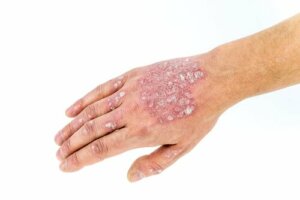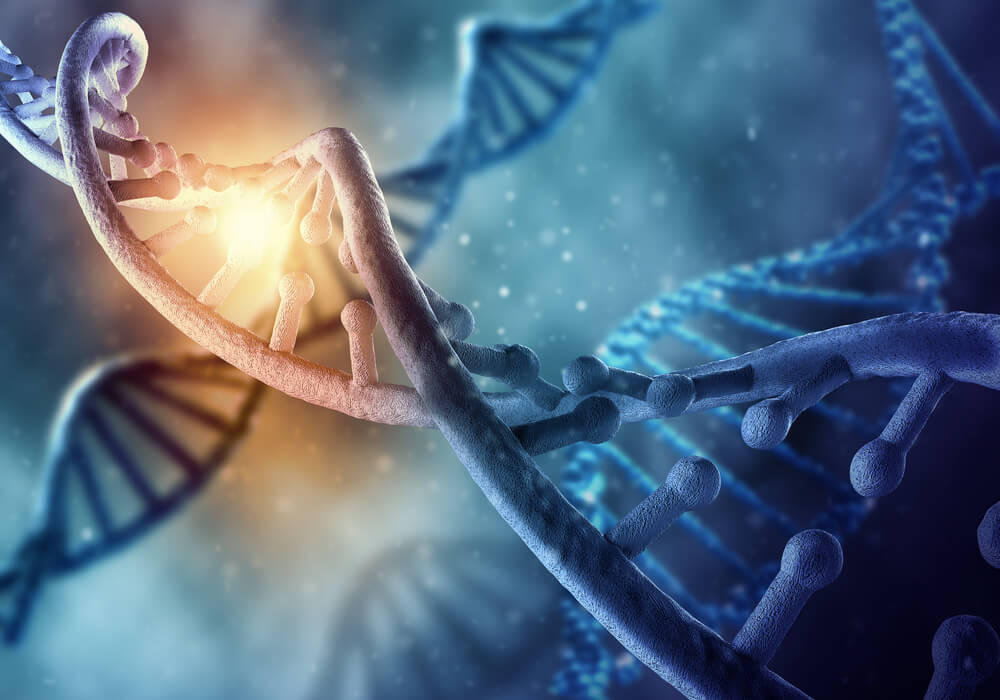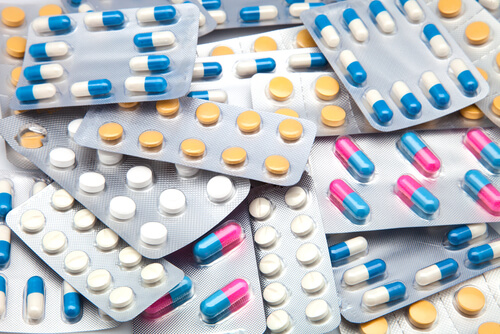All You Need to Know About Psoriasis

Psoriasis is a non-contagious chronic inflammatory disease characterized by the persistent activation of the immune system. It manifests with the appearance of erythematous squamous plaques, generally well defined and with a usually symmetrical distribution that can affect the skin, semi-mucous membranes, scalp, and nails. Find out all about psoriasis in this article.
Psoriasis is considered to be a disease with a genetic predisposition, which is mediated by immunological mechanisms. The influence of multiple environmental factors can trigger or aggravate its evolution.
The pathophysiology that occurs with this disease is the abnormal proliferation of cells of the epidermis. This means that there’s an acceleration in cell division, which causes the skin peeling process to take place every 4 or 5 days, instead of every 20 or 30 days.
According to the age at which the condition begins, we can distinguish:
- Type I psoriasis: Early onset, before the age of 40. These patients usually have a family history. It tends to be generalized, severe, and resistant to treatment.
- Type II psoriasis: Late onset, around 60 years of age. Patients rarely have a family history and the evolution of the disease is usually favorable.
All about psoriasis: triggers
Genetic factors
The study of the frequency of psoriasis in monozygotic twins obtained a concordance of around 70%, which indicates that it’s a disease of genetic origin but conditioned by external or environmental triggers.

Immune factor
Psoriasis is considered an antigen-dependent disease, since it has been observed that certain auto or alloantigens attract antigen-presenting cells, thus causing a cascade of immunological phenomena that give rise to the symptoms of the disease.
Infectious factor
There’s a significant association between people getting psoriasis for the first time and a recent beta-hemolytic streptococcal infection.
Psychological factors
Stress can exacerbate the manifestations of this disease. To explain this, it’s hypothesized that there’s an increase in the release of substance P (sensitive neuropeptide) in the skin, which induces the release of inflammatory mediators.
Physical factors
In places exposed to trauma or abrasion, the typical lesions of the disease appear with greater intensity. This is due to the release of factors that stimulate keratinocyte growth.
Biochemical factors
Elevated levels of arachidonic acid and some of its metabolites have been found in patient plaques, as well as prostaglandins, leukotrienes, and eicosanoids that induce keratinocyte proliferation and the formation of microabscesses on the skin.
You may be interested in: How to Diagnose Fibromyalgia
All about psoriasis: types
- Psoriasis vulgaris or plaque: This is the most common form of the disease and is manifested by the appearance of a scaly, raised, red, and well-demarcated plaque. It appears most frequently in the knees, elbows, scalp and lower back, although it can appear anywhere on the body.
- Gout or guttate psoriasis: This is common in children, adolescents, and young adults. It usually appears after an upper respiratory infection. It manifests with small lesions that appear scattered throughout the body. It usually goes away in a few months.
- Flexural or inverted psoriasis: This manifests itself in the form of erythematous plaques located in places where there are folds, such as the armpits, under the breasts, or in the anogenital folds. Desquamation hardly occurs since it’s inhibited by sweat, so its diagnosis is complicated, and is frequently confused with a fungal infection.
- Erythrodermic psoriasis: This affects the entire skin surface. Superficial scaling begins to occur and the skin is intensely red. Sometimes it requires the hospitalization of the patient, as the skin loses functionality and the body can lose fluid and have fluctuations in body temperature.
- Pustular psoriasis: Within this type, we differentiate two other subtypes.
- Generalized, which appears very infrequently and is very serious.
- Palmo-plantar, which is disabling but less serious, as the pustules are located on the hands and feet.
Treatment of psoriasis

Topical treatments
- Emollients and moisturizers: These help to control mild forms without causing adverse effects. They reduce dryness, promote hydration, and reinforce the effect of more aggressive treatments.
- Calcipotriol: This is a derivative of vitamin D that works by decreasing the growth of epidermal cells and inflammation. It can be irritating.
- Anthralin: This irritates, inflames, and stains. It’s only used on thicker plates and begins to take effect after three weeks.
- Topical steroids: These achieve a rapid anti-inflammatory effect without irritating or staining the skin, which is why they’re the most used. Its continued use can produce tolerance.
- Tars: These are hardly used due to their strong odor and the fact they stain. They owe their action to the ability to reduce the proliferation of cells of the epidermis.
- Topical retinoids: These are derivatives of vitamin A. They’re effective but cause irritation.
Also read: 5 Skin Types and How to Care for Each One
Systemic treatments
- Oral retinoids: These are drugs under special medical control since they’re teratogenic and can cause hepatotoxicity.
- Methotrexate: This slows cell replication quickly. It’s used in severe cases of psoriasis and requires strict medical control due to the side effects it can cause.
- Cyclosporine: This helps to eliminate plaques by inhibiting the inflammatory response. It’s only used in severe cases as it can cause serious side effects.
We hope that it’s been helpful for you to discover all about psoriasis and its causes and treatment. Click on the article below for another skin-related article.
Psoriasis is a non-contagious chronic inflammatory disease characterized by the persistent activation of the immune system. It manifests with the appearance of erythematous squamous plaques, generally well defined and with a usually symmetrical distribution that can affect the skin, semi-mucous membranes, scalp, and nails. Find out all about psoriasis in this article.
Psoriasis is considered to be a disease with a genetic predisposition, which is mediated by immunological mechanisms. The influence of multiple environmental factors can trigger or aggravate its evolution.
The pathophysiology that occurs with this disease is the abnormal proliferation of cells of the epidermis. This means that there’s an acceleration in cell division, which causes the skin peeling process to take place every 4 or 5 days, instead of every 20 or 30 days.
According to the age at which the condition begins, we can distinguish:
- Type I psoriasis: Early onset, before the age of 40. These patients usually have a family history. It tends to be generalized, severe, and resistant to treatment.
- Type II psoriasis: Late onset, around 60 years of age. Patients rarely have a family history and the evolution of the disease is usually favorable.
All about psoriasis: triggers
Genetic factors
The study of the frequency of psoriasis in monozygotic twins obtained a concordance of around 70%, which indicates that it’s a disease of genetic origin but conditioned by external or environmental triggers.

Immune factor
Psoriasis is considered an antigen-dependent disease, since it has been observed that certain auto or alloantigens attract antigen-presenting cells, thus causing a cascade of immunological phenomena that give rise to the symptoms of the disease.
Infectious factor
There’s a significant association between people getting psoriasis for the first time and a recent beta-hemolytic streptococcal infection.
Psychological factors
Stress can exacerbate the manifestations of this disease. To explain this, it’s hypothesized that there’s an increase in the release of substance P (sensitive neuropeptide) in the skin, which induces the release of inflammatory mediators.
Physical factors
In places exposed to trauma or abrasion, the typical lesions of the disease appear with greater intensity. This is due to the release of factors that stimulate keratinocyte growth.
Biochemical factors
Elevated levels of arachidonic acid and some of its metabolites have been found in patient plaques, as well as prostaglandins, leukotrienes, and eicosanoids that induce keratinocyte proliferation and the formation of microabscesses on the skin.
You may be interested in: How to Diagnose Fibromyalgia
All about psoriasis: types
- Psoriasis vulgaris or plaque: This is the most common form of the disease and is manifested by the appearance of a scaly, raised, red, and well-demarcated plaque. It appears most frequently in the knees, elbows, scalp and lower back, although it can appear anywhere on the body.
- Gout or guttate psoriasis: This is common in children, adolescents, and young adults. It usually appears after an upper respiratory infection. It manifests with small lesions that appear scattered throughout the body. It usually goes away in a few months.
- Flexural or inverted psoriasis: This manifests itself in the form of erythematous plaques located in places where there are folds, such as the armpits, under the breasts, or in the anogenital folds. Desquamation hardly occurs since it’s inhibited by sweat, so its diagnosis is complicated, and is frequently confused with a fungal infection.
- Erythrodermic psoriasis: This affects the entire skin surface. Superficial scaling begins to occur and the skin is intensely red. Sometimes it requires the hospitalization of the patient, as the skin loses functionality and the body can lose fluid and have fluctuations in body temperature.
- Pustular psoriasis: Within this type, we differentiate two other subtypes.
- Generalized, which appears very infrequently and is very serious.
- Palmo-plantar, which is disabling but less serious, as the pustules are located on the hands and feet.
Treatment of psoriasis

Topical treatments
- Emollients and moisturizers: These help to control mild forms without causing adverse effects. They reduce dryness, promote hydration, and reinforce the effect of more aggressive treatments.
- Calcipotriol: This is a derivative of vitamin D that works by decreasing the growth of epidermal cells and inflammation. It can be irritating.
- Anthralin: This irritates, inflames, and stains. It’s only used on thicker plates and begins to take effect after three weeks.
- Topical steroids: These achieve a rapid anti-inflammatory effect without irritating or staining the skin, which is why they’re the most used. Its continued use can produce tolerance.
- Tars: These are hardly used due to their strong odor and the fact they stain. They owe their action to the ability to reduce the proliferation of cells of the epidermis.
- Topical retinoids: These are derivatives of vitamin A. They’re effective but cause irritation.
Also read: 5 Skin Types and How to Care for Each One
Systemic treatments
- Oral retinoids: These are drugs under special medical control since they’re teratogenic and can cause hepatotoxicity.
- Methotrexate: This slows cell replication quickly. It’s used in severe cases of psoriasis and requires strict medical control due to the side effects it can cause.
- Cyclosporine: This helps to eliminate plaques by inhibiting the inflammatory response. It’s only used in severe cases as it can cause serious side effects.
We hope that it’s been helpful for you to discover all about psoriasis and its causes and treatment. Click on the article below for another skin-related article.
- Valdivia-Blondet L. Patogenia de la psoriasis
- Vizcaya Moreno M.F., Solano Ruiz M.C., Dominguez Santamaría J.M., Espejo Luna E. Psoriasis. Tipología, tratamientos y cuidados de enfermería.
- Alfonso Trujillo I., Díaz García M.A., Sagaró Delgado B., Alfonso Trujillo Y. Patogenia de la psoriasis a la luz de los conocimientos actuales.
Este texto se ofrece únicamente con propósitos informativos y no reemplaza la consulta con un profesional. Ante dudas, consulta a tu especialista.







